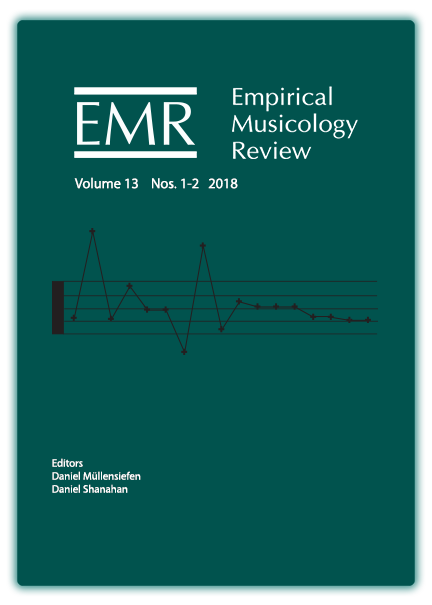Are Humoresques Humorous? On the Similarity Between Laughter and Staccato
DOI:
https://doi.org/10.18061/emr.v13i1-2.5608Keywords:
music cognition, staccato, composition, music and humour, laughterAbstract
Two studies are reported testing the conjecture that certain musical sounds or musical works may emulate the punctuated sound (ha-ha-ha) of human laughter. In the first study, 25 participants were instructed to adjust the tempo and duty cycle (articulation) of simple tone sequences to produce the most laughter-like sound. The adjusted tempos were consistent across participants but slower than measures of actual human laughter. The adjusted duty cycles were comparable to those evident in human laughter. In the second study, comedic-related musical compositions (including humoresques, badineries, and Scherzos) were compared with similar-tempo works by the same composers. It is shown that humoresques contain more staccato passages. However, these detached articulations are not more likely to be isochronous as might be expected if emulating human laughter. Overall, the results provide mixed evidence consistent with the idea that composers emulate laughter when composing certain kinds of humorous passages.Published
How to Cite
Issue
Section
License
Copyright (c) 2019 Caitlyn Trevor, David Huron

This work is licensed under a Creative Commons Attribution-NonCommercial 4.0 International License.


